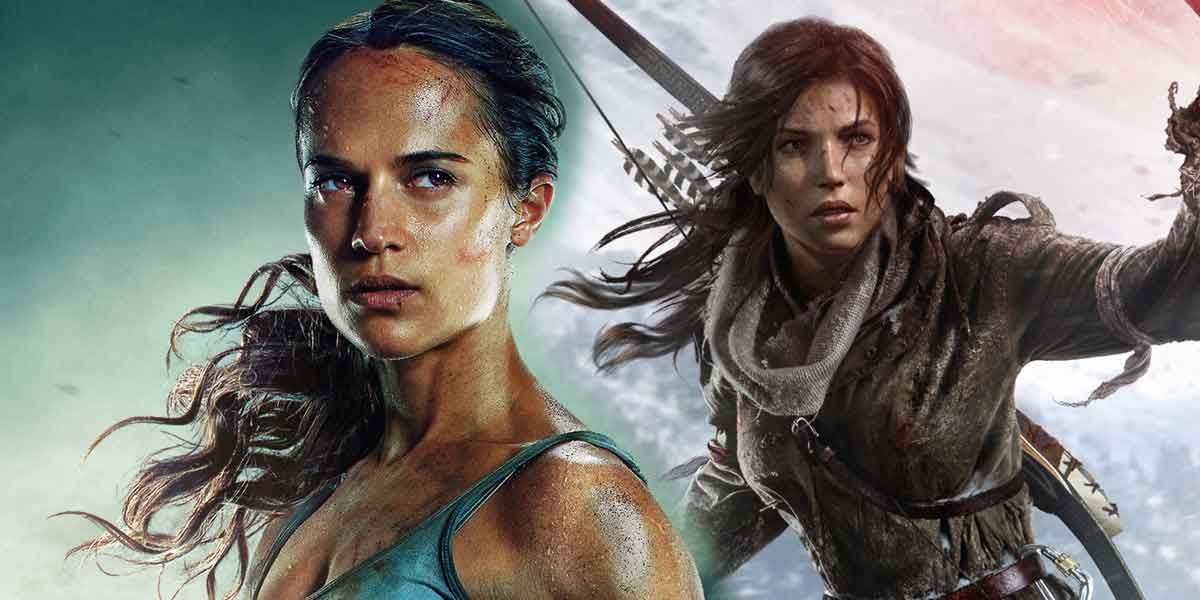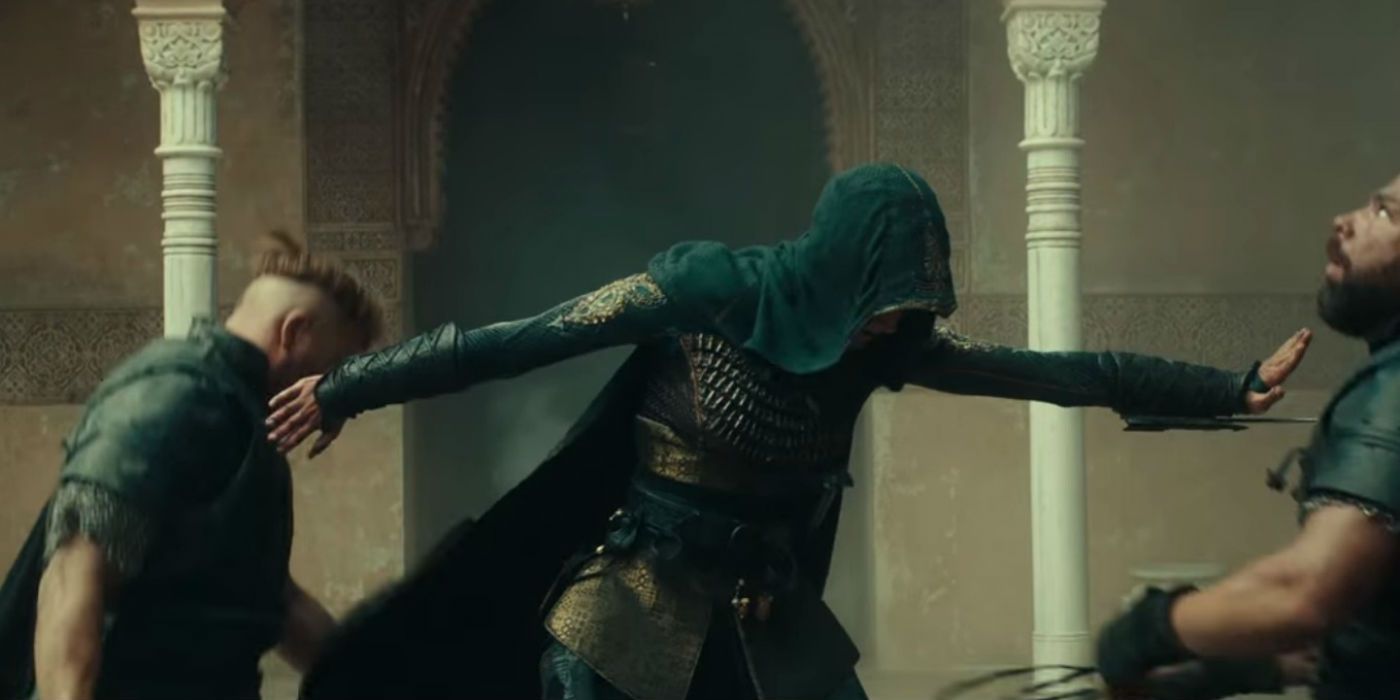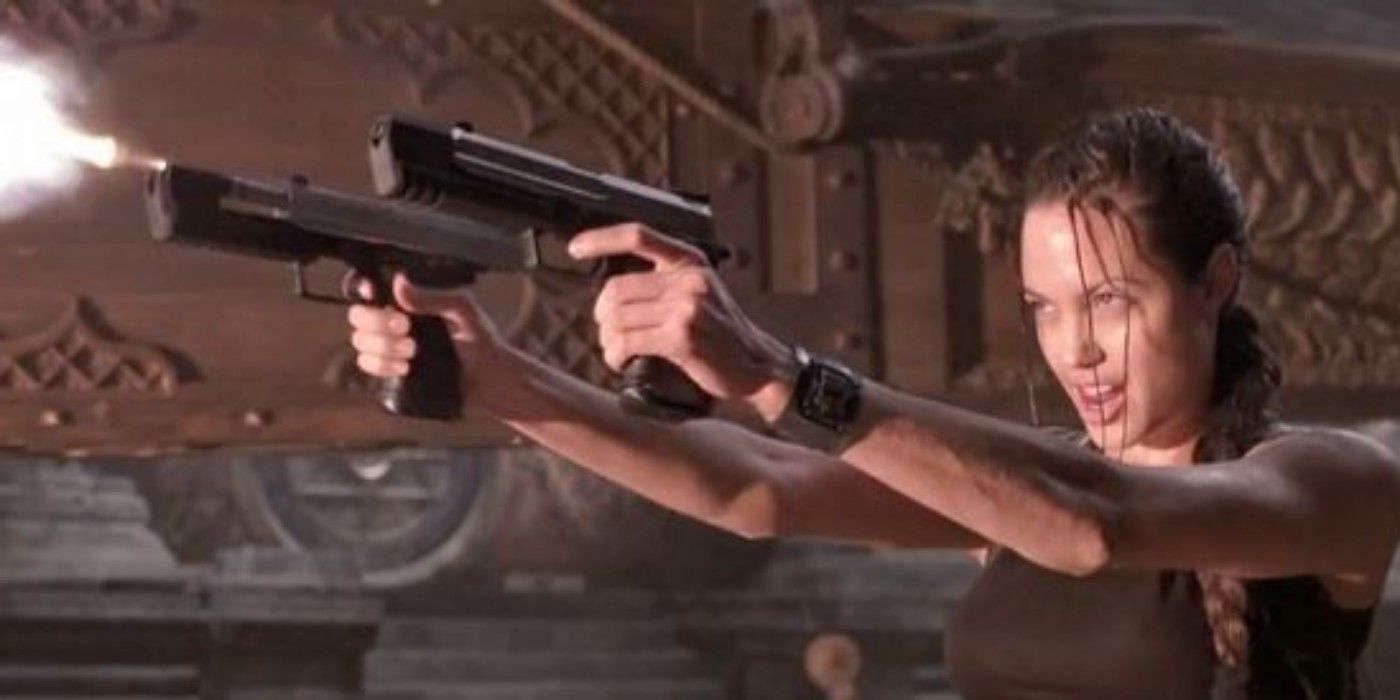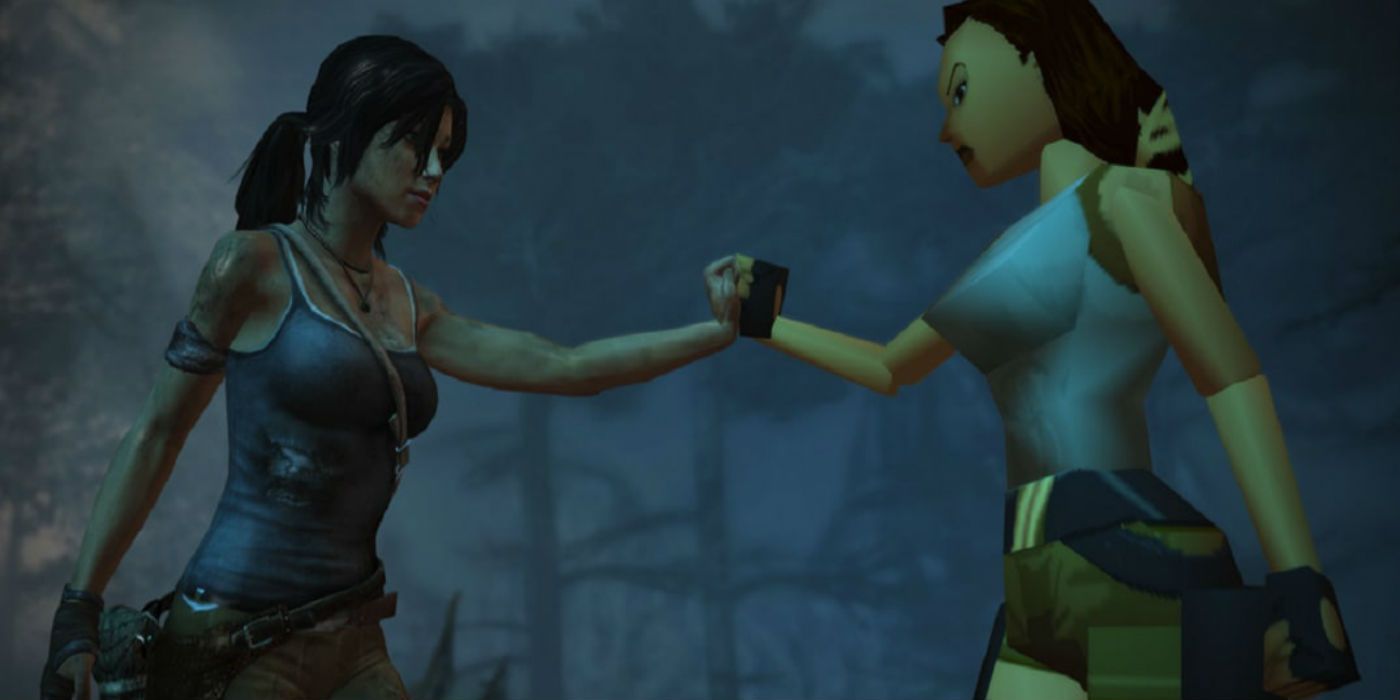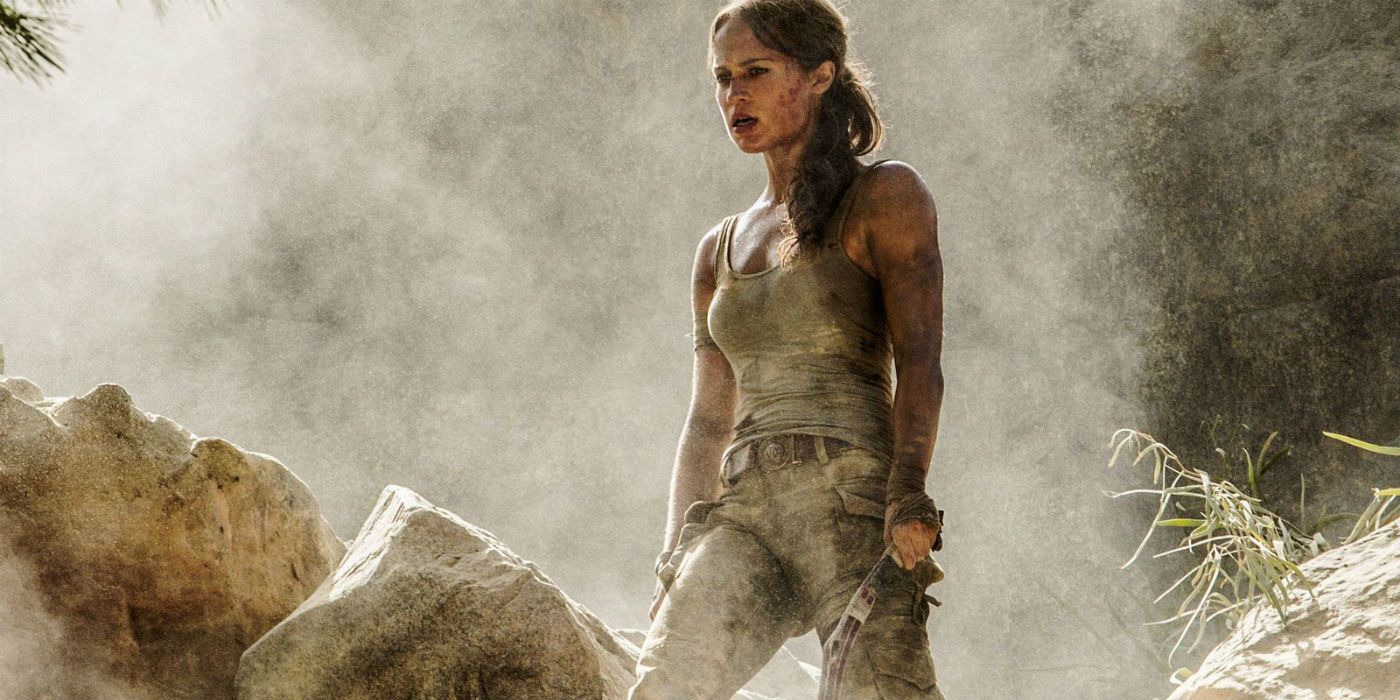In mid-March, we'll be getting the first Tomb Raider film since 2003's Lara Croft Tomb Raider: The Cradle of Life. This time around, Alicia Vikander stars as a younger Lara Croft as she boldly attempts to uncover the secrets behind her father's disappearance. Her search takes her to the uncharted island of Yamatai, where a secretive organisation known as Trinity, awaits her. Tomb Raider will explore Croft's journey as she slowly develops from a young, reckless girl into the fearless, history-loving adventurer of decades past.
Already, fans of the series recognize that the film will be incorporating elements from the rebooted Tomb Raider video game series. Square Enix's 2013 Tomb Raider and the 2016 sequel, Rise of the Tomb Raider. The costumes and design of the characters, the locations and some of the action sequences we've seen seem to have been taken straight out of these games. Still, it's too early to say whether or not the studio has done right by Lara. After all, many video game films successfully replicate the aesthetic of the source material, but fail when it comes to putting substance behind it.
RELATED: Tomb Raider Trailer Compared to Video Game Scenes in New Video
A perfect example is Assassin's Creed, for which Ubisoft -- the video game developer behind the franchise -- had full creative control. If anyone were to understand the importance of elaborating on the historical setting, it should have been the company that owns the franchise. But while the set and costumes were well designed and faithful to the video games they were based on, the film was justifiably criticized for being poorly written and focusing too heavily on spectacle and otherwise meaningless action sequences. Set during the Spanish Inquisition, the film, unlike the video games, did nothing to explain its setting or the technology and characters that united it with its modern day counterpart.
That's a flaw shared by most, if not all video game film adaptations. They tend to look a lot like their video game counterparts, but fail to capture the depth and complexity that drew fans in in the first place. Of course, that's not always necessary. In fact, the Tomb Raider films of the early 2000's were anything but deep or complex.
Page 2: [valnet-url-page page=2 paginated=0 text='What%20Angelina%20Jolie%27s%20Tomb%20Raider%20Films%20Did%20Right%20-%20And%20Wrong']
Lara Croft: Tomb Raider (directed by Simon West) was mostly filled with lengthy action sequences, a lot of acrobatic stunts and a few puzzles here and there. It may not have been the most dramatically significant film and it may not have explained anything about the titular character to newcomers but it was enough for fans of the franchise. No one expected anything more from it because it captured the essence of the video game series on which it was based, which is why people didn't really care about whether or not it was poorly written-- and it was poorly written-- it was just good fun. However, the character has become much more than just a fun avatar through which fans can enjoy elaborate, ancient tombs.
In the decades since her creation, Lara Croft has been the subject of praise and controversy. She first appeared in the video game, Tomb Raider, developed by Core Design, way back in 1996. She was downright revolutionary. Until she was introduced into mainstream video games, the industry was saturated with characters trying to out-do the others with their masculinity. Lara and her video games offered just as much gun-totting action alongside intriguing puzzles. None of the games ever really expanded on her backstory, because she didn't really need one. As a character, she was known for being fun and sexy, the first of her kind. The stories she was involved in were interesting enough.
RELATED: How the Tomb Raider Reboot Can Outdo Its Predecessors
However, the lack of proper characterization combined with the busty character model has led to-- as we mentioned earlier-- as much praise as it has controversy. Many, including industry writers such as Amy Hennig, welcomed the character as a symbol of sexual empowerment and a means for both male and female gamers to identify with a video game character, owing to her loosely defined character. Conversely, some feminists argued, for obvious reasons, that the character was simply a male-constructed fantasy.
In the years that followed, as the Tomb Raider video games declined in quality with each entry in the franchise, the significance of the character as well as her status as a sex symbol, came into question. Many saw that, since the video games were no longer significant, Lara Croft's sexuality, once a sign of liberty and confidence, was now almost completely gratuitous and it was starting to show, even in the few animated shows and comic books that adapted her.
After several failed attempts at reviving the franchise, Square Enix acquired the rights to Tomb Raider and decided to take it in a new direction. 2013's Tomb Raider explored Lara as a young and inexperienced explorer. The games no longer starred the confident and fearless woman most people were familiar with, instead, they explored her past and her development into the recognized action heroine.
Now there was much more to her than just her career as a wealthy, dinosaur-fighting archaeologist. She was a woman who struggled immensely in the name of discovery. That's who she is now and it's reflected in the obvious shift in focus when it comes to the video games and the attached imagery. Where marketing for the video games once flaunted Lara's sex appeal, new images focus on the gritty world that surrounds her as she soldiers on, bandaged and crawling through the muck. The video games themselves are also much more story-driven, providing many cinematic moments of struggle and not just lengthy monster fights and shootouts.
Page 3: [valnet-url-page page=3 paginated=0 text='What%20The%20New%20Tomb%20Raider%20Has%20to%20Do%20to%20Get%20Lara%20Croft%20Right']
It's why Lara Croft: Tomb Raider and Lara Croft Tomb Raider: The Cradle of Life were able to get away with a thinly written action heroine, played by Angelina Jolie (whom, as a person, just oozes confidence and power), but current Tomb Raider media, including the upcoming Tomb Raider film, must to focus on building a well-rounded Lara Croft. They cannot rely on sex appeal and outrageous action sequences to satisfy audiences, because fans of the rebooted franchise expect so much more. Fortunately, the upcoming film seems to be adapting all the right aspects of the new Lara.
The trailers and synopsis show that the film will indeed focus on Lara's backstory; her fight against Trinity, her life-changing journey across the island of Yamatai and perhaps her transformation from reckless adventurer to fearless explorer.
RELATED: Lara Croft Is a Survivor in New Tomb Raider Trailer
We have to keep in mind that video games don't generally have a limit on time. A video game can tell hours worth of story while films are generally limited to around two hours, unless they're willing to risk boring their audiences. Video game films often make the mistake of conflating complex concepts and ideas, rushing characters and generally trying to shove everything from a video game into a two hour film.
Tomb Raider has taken elements from both Tomb Raider and Rise of the Tomb Raider, but it's clear that they aren't trying to emulate the source material, rather, they are respecting it and capturing only the essentials of Lara Croft and her story. Of course, it's too early to say whether or not they've done it right, but if they have and they manage to depict Lara as she deserves to be depicted, there's no doubt that it'll pay off in a big way. They would appease long-time fans of the character and perhaps provide a decent introduction for newcomers, which would distinguish it from almost every other video game film adaptation out there.
It's worth hoping. After all, Lara has been an iconic character for more than 20 years. She deserves a great film.
Directed by Roar Uthaug, Tomb Raider debuts March 16. The film stars Alicia Vikander as Lara Croft, Dominic West as Richard Croft, Daniel Wu as Lu Ren, Kristin Scott Thomas as Ana Miller, Hannah John-Kamen as Sophie and Walton Goggins as Mathias Vogel.

